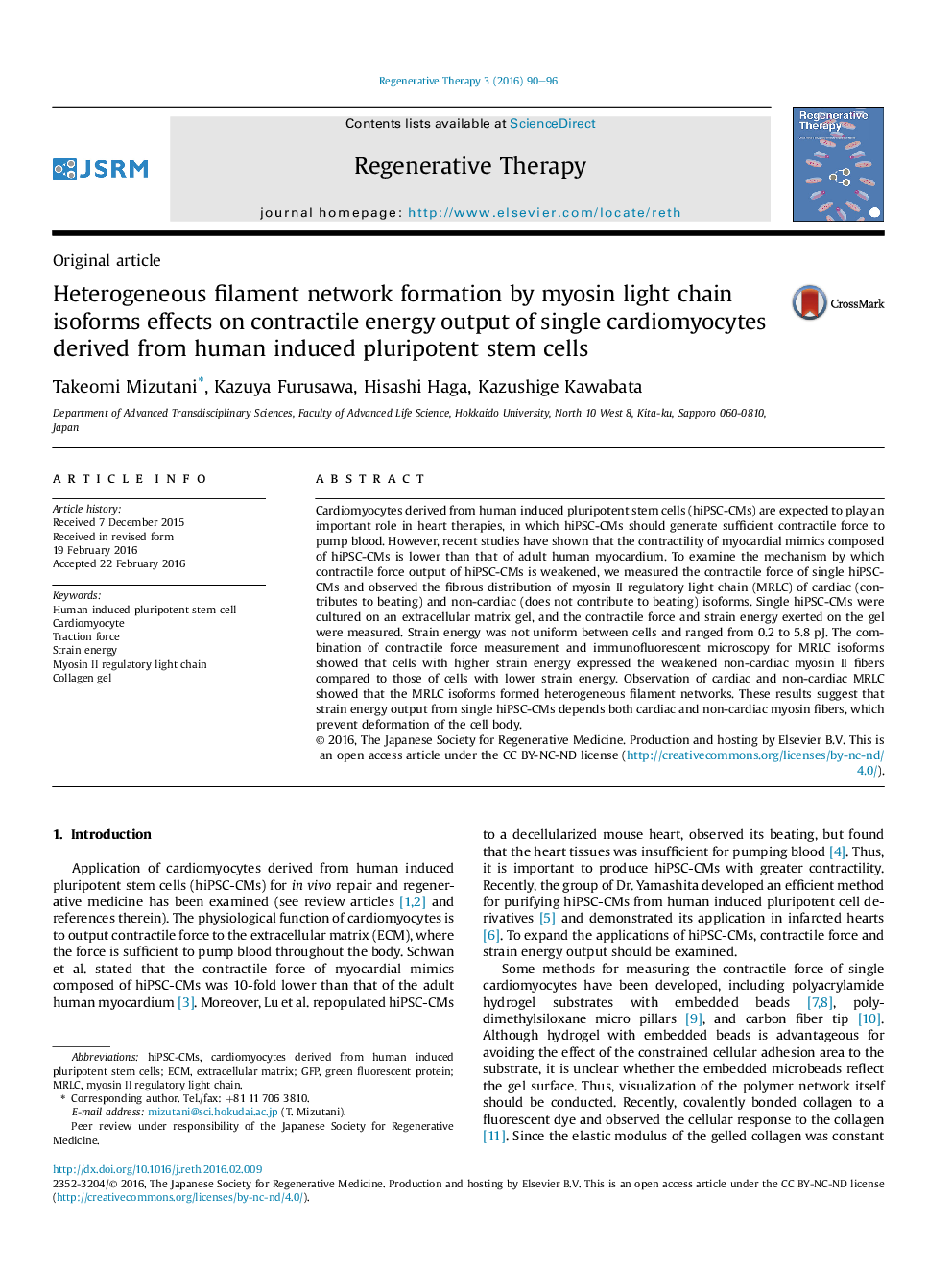| کد مقاله | کد نشریه | سال انتشار | مقاله انگلیسی | نسخه تمام متن |
|---|---|---|---|---|
| 2022308 | 1542363 | 2016 | 7 صفحه PDF | دانلود رایگان |
• The contractile force output of single hiPSC-CMs is uniform between cells.
• Cells that output high strain energy generally form weak non-cardiac myosin II fibers.
• Cardiac myosin II and non-cardiac myosin II construct heterogeneous fiber networks.
Cardiomyocytes derived from human induced pluripotent stem cells (hiPSC-CMs) are expected to play an important role in heart therapies, in which hiPSC-CMs should generate sufficient contractile force to pump blood. However, recent studies have shown that the contractility of myocardial mimics composed of hiPSC-CMs is lower than that of adult human myocardium. To examine the mechanism by which contractile force output of hiPSC-CMs is weakened, we measured the contractile force of single hiPSC-CMs and observed the fibrous distribution of myosin II regulatory light chain (MRLC) of cardiac (contributes to beating) and non-cardiac (does not contribute to beating) isoforms. Single hiPSC-CMs were cultured on an extracellular matrix gel, and the contractile force and strain energy exerted on the gel were measured. Strain energy was not uniform between cells and ranged from 0.2 to 5.8 pJ. The combination of contractile force measurement and immunofluorescent microscopy for MRLC isoforms showed that cells with higher strain energy expressed the weakened non-cardiac myosin II fibers compared to those of cells with lower strain energy. Observation of cardiac and non-cardiac MRLC showed that the MRLC isoforms formed heterogeneous filament networks. These results suggest that strain energy output from single hiPSC-CMs depends both cardiac and non-cardiac myosin fibers, which prevent deformation of the cell body.
Journal: Regenerative Therapy - Volume 3, March 2016, Pages 90–96
